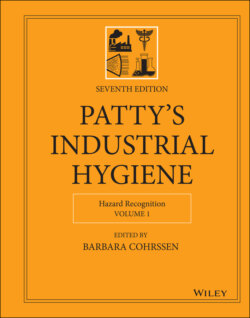Читать книгу Patty's Industrial Hygiene, Hazard Recognition - Группа авторов - Страница 102
1 INTRODUCTION
ОглавлениеRisk communication in the occupational setting is most often associated with emergency preparedness and response, communication to the public, and within and between responders to a potential crisis situation. In the industrial hygiene profession (IH), risk communication is most important in discussions with workers. However, communicating risks in a language that workers understand can be a difficult expectation, especially when this skillset is not an essential component within the training curriculum of field practitioners. Learning how to communicate risk with workers is probably the most important lesson for field practitioners to learn if the end goal is to achieve recognition, control, and prevention of workplace hazards over the long term. It is over time that the chronic exposure‐related diseases develop, so ingraining the inherent workplace risks to the workforce is an essential component of risk assessment outcomes and risk management practices as a whole. It is also important for an IH to learn how to communicate within and between their environment, health, and safety (EHS) peers as well, for if the comprehensive workplace risks and necessary preventative measures cannot be understood between safety, health, and environmental professionals, then they cannot be fully understood by workers either. This is especially true for the current trend of EHS Generalist professionals. EHS Generalists need to understand for themselves where and how the relative risks for each of the individual EHS disciplines interact and are prioritized for a given task or process. However, this essential need for professionals requiring a multidisciplinary mindset is yet another underserved component of risk communication that needs to be addressed. As the concept of risk is understood differently depending on the listening and message receiving audience, the methods to communicate risk to managers and even into corporate board rooms also becomes a critical, yet limited, point of discussion, and teaching. Collectively, this holistic mindset can be considered as a process for directional risk communication for stakeholders; the understanding of how to communicate at the worker level, the interdisciplinary level, and to upper management. To accomplish this, it is important to develop a single, simplified form for communicating risk. By doing so, everyone who is a necessary partner for the field practitioners to accomplish their goals can speak a standardized language. This helps to ensure that all those listening can understand the risks being communicated and comprehend what their roles and responsibilities are to ensure these workplace risks are minimized or eliminated.
